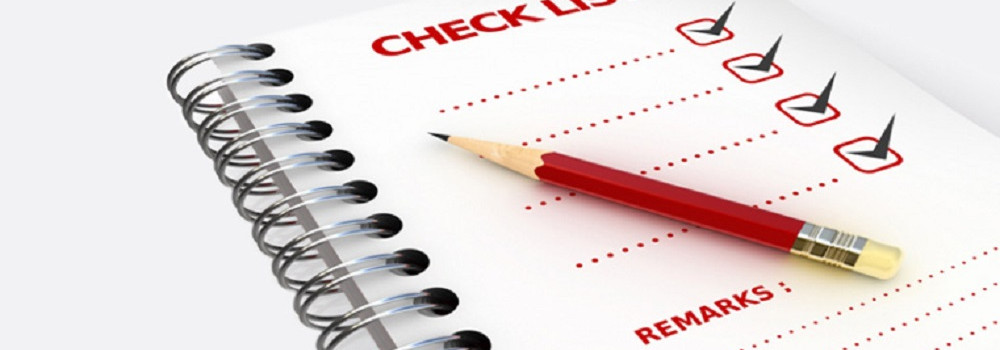1. Editor Roles and Responsibilities
The Editors and/or Editorial Board should:
- Review submitted manuscripts.
- Keep information pertaining to submitted manuscripts confidential.
- Disclose any conflicts of interest.
- Identify topics for special issues, which they may guest edit.
- Evaluate manuscripts only for their intellectual content without regard to race, gender, sexual orientation, religious belief, ethnic origin, citizenship, or political philosophy of the authors.
- Be responsible for making publication decisions for submitted manuscripts.
- Review suspected incidents of plagiarism.
- Advise on journal policy and scope.
- Attract new authors and submissions.
Editor Responsibilities for Reviewers:
- Assigning papers for review appropriate to each reviewer’s area of interest and expertise.
- Establishing a process for reviewers to ensure that they treat the manuscript as a confidential document and complete the review promptly.
- Informing reviewers that they are not allowed to make any use of the work described in the manuscript or to take advantage of the knowledge they gained by reviewing it before publication.
- Providing reviewers with written, explicit instructions on the journal’s expectations for the scope, content, quality, and timeliness of their reviews to promote thoughtful, fair, constructive, and informative critique of the submitted work.
- Requesting that reviewers identify any potential conflicts of interest and asking that they recuse themselves if they cannot provide an unbiased review.
- Allowing reviewers appropriate time to complete their reviews.
- Requesting reviews at a reasonable frequency that does not overtax any one reviewer.
- Finding ways to recognize the contributions of reviewers, for example, by publicly thanking them in the journal; providing letters that might be used in applications for academic promotion; offering professional education credits; or inviting them to serve on the editorial board of the journal.
2. Author and Corresponding Author Responsibilities
Principles related to authorship with general consensus include the following:
- Individuals who contributed to the work but whose contributions were not of sufficient magnitude to warrant authorship should be identified by name in an acknowledgments section.
- All individuals who qualify for authorship or acknowledgment should be identified. Conversely, every person identified as an author or acknowledged contributor should qualify for these roles.
- Individuals listed as authors should review and approve the manuscript before publication.
- Editors should require authors and those acknowledged to identify their contributions to the work and make this information available to readers.
- The ultimate reason for the identification of authors and other contributors is to establish accountability for the reported work.
Authorship should be limited to:
- Individuals who have made a significant contribution to the conception, design, execution, or interpretation of the reported study.
- Identification of authors and other contributors is the responsibility of the people who did the work (the researchers) not the people who publish the work (editors, publishers). Researchers should determine which individuals have contributed sufficiently to the work to warrant identification as an author.
- Individuals listed as authors should review and approve the manuscript before publication.
- Individuals who contributed to the work but whose contributions were not of sufficient magnitude to warrant authorship should be identified by name in an acknowledgments section.
- All individuals who qualify for authorship or acknowledgment should be identified. Conversely, every person identified as an author or acknowledged contributor should qualify for these roles.
- Those who have made significant contributions should be listed as co-authors.
- Others who have participated in certain substantive aspects of the research project should be acknowledged or listed as contributors.
The corresponding author should:
- Ensure that all appropriate co-authors have seen and approved the final version of the paper.
- Give consent to the manuscript submitted for publication.
- Manage any requests to add, delete or rearrange author names in an article published in an online issue.
The authors should:
- The author-editor relationship is founded on confidentiality. Authors should hold all communication between themselves and the journal in confidence. Authors should designate a specific contact for all communication about the manuscript throughout peer review and (if accepted) the publication process. Authors should observe journal policy on communication with external peer reviewers (the policy may vary depending on whether a journal uses masked or non-masked peer review) and should observe journal policy on prepublication embargoes.
- Ensure that they have written entirely original works and if the authors have used the work and/or words of others that this has been appropriately cited or quoted. The authors should provide a statement attesting to the originality of the study they have submitted for consideration. Originality is crucial, because many journals have limited space and editors may give a low priority to studies that, regardless of scientific accuracy and validity, do not advance the scientific enterprise. Some journals may ask authors to provide copies of reports on other studies (articles, manuscripts, and abstracts) related to the study under consideration.
- Copyright Assignment. Authors are usually expected to assign copyright to the journal publishing their study. Assignment of copyright is a legal document in which the authors assign certain rights to the publisher. Upon acceptance of an article, authors will be asked to complete a 'Journal Publishing Agreement'. An e-mail will be sent to the corresponding author confirming receipt of the manuscript together with a 'Journal Publishing Agreement' form or a link to the online version of this agreement.
- Secure the necessary reproduction rights with the rights holder for any third party material (images, digital content, etc.) you have used prior to submission.
- Ensure that they have acknowledged any funding that has contributed to the publication.
- Provide the raw data in connection with a paper for editorial review, and should be prepared to provide public access and retain such data for a reasonable time after publication.
- NOT, in general, publish manuscripts describing essentially the same research in more than one journal or primary publication.
- NOT submit the same manuscript to more than one journal concurrently constitutes unethical publishing behavior and is unacceptable.
- Include disclosure of all relationships that could be viewed as presenting a potential conflict of interest.
- Promptly notify the journal editor or publisher and cooperate with the editor to retract or correct the paper.
- Ensure that the manuscript contains a statement that all procedures were performed in compliance with relevant laws and institutional guidelines and that the appropriate institutional committee(s) has approved them.
- Include a statement in the manuscript that informed consent was obtained for experimentation with human subjects.
- Obtain appropriate consents, permissions, and releases where an author wishes to include case details or other personal information or images of patients and any other individuals.
3. Peer-review Process
Reviewer responsibilities toward authors:
- Providing written, unbiased feedback in a timely manner on the scholarly merits and the scientific value of the work, together with the documented basis for the reviewer’s opinion
- Indicating whether the writing is clear, concise, and relevant and rating the work’s composition, scientific accuracy, originality, and interest to the journal’s readers.
- Avoiding personal comments or criticism.
- Maintaining the confidentiality of the review process: not sharing, discussing with third parties, or disclosing information from the reviewed paper.
Reviewer responsibilities in regards to citations:
- Recommending the addition of important or relevant published works that are widely available in the citation list.
- Discouraging the citation of unrelated works.
- Alerting the authors on the possible errors or misuse of citations whenever necessary.
- Informing the authors of knowledge of cited works that have been updated or retracted.
Reviewer responsibilities toward editors:
- Notifying the editor immediately if unable to review in a timely manner and providing the names of potential other reviewers.
- Alerting the editor about any potential personal or financial conflict of interest and declining to review when a possibility of a conflict exists.
- Complying with the editor’s written instructions on the journal’s expectations for the scope, content, and quality of the review.
- Providing a thoughtful, fair, constructive, and informative critique of the submitted work, which may include supplementary material provided to the journal by the author.
- Determining scientific merit, originality, and scope of the work; indicating ways to improve it; and recommending acceptance or rejection using whatever rating scale the editor deems most useful.
- Noting any ethical concerns, such as any violation of accepted norms of ethical treatment of animal or human subjects or substantial similarity between the reviewed manuscript and any published paper or any manuscript concurrently submitted to another journal which may be known to the reviewer.
- Refraining from direct author contact.
4. Publication Ethics
The Editorial Committee aims to shape the scientific journal environment such as ethical publishing practices, inform those involved in the editorial process, and foster informed decision-making by editors so the integrity of our publications is upheld. in addition, publishers and editors take reasonable steps to identify and prevent the publication of papers where research misconduct has occurred; in no event shall a journal or its editors encourage such misconduct, or knowingly allow such misconduct to take place; in the event that a journal’s publisher or editors are made aware of any allegation of research misconduct the publisher or editor shall deal with allegations appropriately; the journal should have available guidelines for retracting or correcting articles when needed; and finally publishers and editors should always be willing to publish corrections, clarifications, retractions and apologies when needed.
5. Copyright and Access
Authors who claim ownership to the data being reported, along with the manuscript’s authors, may be asked to sign over certain publication rights to the journal through copyright transfer or a licensing agreement. Authors should be aware of, and must abide by, the terms of these agreements.
6. Archiving
ZULFAQAR Journal of Defence Management, Social Science & Humanities (JDMSSH) is published online with a frequency of two (2) issues per year. Besides that, special issues of JDMSSH will be published non-periodically from time to time.
Publisher
Penerbit UPNM as the publisher is committed to ensuring that advertising, reprint or other commercial revenue has no impact or influence on editorial decisions. In addition, Penerbit UPNM will assist in communications with other journals and/or publishers where this is useful to editors. Finally, Penerbit UPNM will work closely with other publishers and industry associations to set standards for best practices on ethical matters, errors and retractions--and are prepared to provide specialized legal review and counsel if necessary.







